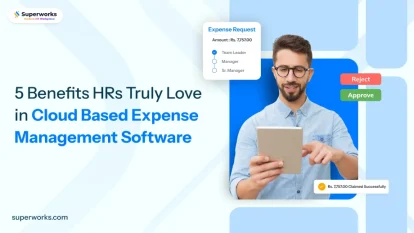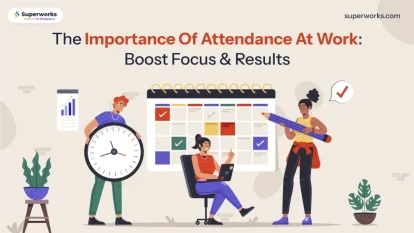
In today’s data-centric world, companies leverage HR analytics projects to transform workforce management through informed decision-making. Actually, such projects enable organizations to collect and analyze HR data, thus helping in discovering different insights that have an effect on recruitment, retention, productivity, as well as on overall employee experience. This guide covers everything from understanding what HR analytics projects are, through proper implementation, and to how to truly leverage them for maximum data-driven insights.
What is an HR Analytics Project?
An HR analytics project is the systematic process of collecting and analyzing HR data with the intent of extracting insights toward improvements in workforce management practices. Such projects apply HR data analytics to answer key questions from an understanding of turnover trends to the optimization of recruitment strategy.
HR and data analytics can empower HR professionals to move beyond intuition and drive toward decisions that are based on evidence. In this regard, HR analytics is the door for organizations that seek to experience measurable changes in hiring, performance, engagement, and retention. Moreover, HR analytics projects align workforce initiatives with overarching business goals and consequently increase organizational effectiveness.
Key Benefits of HR Analytics Projects
HR analytics brings tangible value across the organization. Here’s how HR analytics projects provide impactful benefits:
Better Recruitment and Retention
Analyzing the recruitment data provides the organization with the kind of qualities successful candidates have and helps in making the hiring process streamlined. Predictive HR analytics enables an HR team to identify the employees who are most likely to leave the organization and thus, an opportunity for retention is provided before they actually walk out of the door.
Boosted Productivity and Engagement
In this field, companies can determine factors of high productivity and engagement through HR data analytics. This has the insight that allows HR to develop initiatives that will drive better performance, and job satisfaction, for instance, tailored development programs and targeted wellness initiatives.
Strategic Alignment and Better Decision Making
Based on actual data-informed insights, leaders in HR would be better positioned to make informed decisions that most probably agree with the intent of the company. With available metrics, leaders can certainly make the necessary adjustments for real-time insights, thereby ensuring that all actions of the HR would meet the business goals.
Reduced HR Costs
HR analytics can save organizations huge sums since they optimize recruitment, reduce turnover, and improve productivity. Savings in recruitment and training expenses are the strongest case for continued investments in HR analytics projects.
Setting Up an HR Analytics Project
Establishing a successful HR analytics project begins with a solid setup phase. Here’s how organizations can lay the groundwork for success:
Define Objectives and Set Success Metrics
Clear objectives give direction to the project and make it easier to measure success. Examples include:
- Lower turnover by identifying risky positions and conducting specific interventions.
- Improvement in recruitment by discovering characteristics of high-performance employees.
- Enhancing engagement through specific programs based on engagement data.
Defining these objectives through KPIs enables HR leaders to track project performance and show value to their stakeholders.
Getting Sponsorship and Commitment from Stakeholders
For an HR analytics project to be successful, it should obtain executive sponsorship. By securing buy-in from senior leaders and leveraging the HR Portal, HR can ensure the project receives the resources it needs. Regular communication helps maintain stakeholder alignment and encourages their commitment.
Collect and Integrate Data from Key Sources
Data is the foundation of any HR analytics project. Collect data from sources like:
- HRMS systems for payroll, attendance, and other employment data.
- Employee engagement surveys to measure sentiment.
- Performance management systems that track progress, promotions, and feedback.
Integrating data from these sources provides a complete picture of employee experience and performance, helping uncover deeper insights.
Ready to take your HR strategy to the next level?
Discover the tools and techniques that can turn your HR analytics project into a game-changer for your organization!
HR Analytics Process: Phases and Techniques
An effective HR analytics process involves several distinct phases to ensure accurate and actionable insights.
Data Collection and Preparation
Reliable data collection is essential for valid analysis. HRMS systems, engagement surveys, performance-tracking systems, etc., are examples of data organizations can draw from. Thus, ensuring the quality and consistency of data across sources is very important because inconsistent data affects the quality of insights created.
Data Analysis Techniques
Using advanced HR analytics tools, HR professionals can explore data through various techniques:
- Descriptive Analytics: involves looking into patterns that already exist, thus giving a snapshot of the current state regarding past turnover or engagement trends.
- Predictive HR Analytics: relies on machine learning to predict outcomes based on successive steps taken in an organization, such as predicting future risk of attrition.
- Prescriptive Analytics: Suggests future course of action, such as retention programs for at-risk employees.
Selecting the Right Tools
Choosing the right HR analytics tools makes it easier to execute these phases efficiently. Popular tools include:
- Tableau and Power BI for robust visualization and real-time reporting.
- Dedicated HR analytics platforms like Visier, are designed specifically for comprehensive HR insights.
- HRMS company tools that offer integrated analytics modules, streamlining data flow.
These tools help HR leaders efficiently process and interpret data, supporting faster decision-making and better outcomes.
Building a Skilled HR Analytics Team
The right team is essential for a successful HR analytics project. Key roles and their responsibilities include:
- Data Analysts: It is someone who analyzes data; it changes the raw form of data to something meaningful and relevant.
- HR Specialists: They bring HR expertise, ensuring that analysis is contextually relevant.
- Project Manager: They supervise the timeline and resource allocation based on project goals but with an outcomes focus.
To create a working team, conduct training and development on continuous programs in emerging HR data analytics and other related predictive analytics.
Evaluation of Success and Measurement of ROI
In order to have value to express, the HR teams first need to identify relevant KPIs for the HR analytics projects and then calculate the ROI.
Key Performance Indicators (KPIs)
Tracking KPIs helps monitor the success of the project over time. Common KPIs for HR analytics include:
- Turnover Rate: Tracks retention and engagement.
- Time to Hire: Measures the efficiency of recruitment processes.
- Employee Engagement Scores: Indicates satisfaction, motivation, and commitment.
Monitoring these metrics at appropriate intervals helps HR leaders keep tabs on the progress, make adjustments as needed, and tell the success story of the project.
Calculating Return on Investment (ROI)
As evidence of financial worth, the ROI should be measured in HR where the cost of running the project is weighed against the savings or added value produced. For instance:
- Low Turnover: The lower the turnover, the lesser the hiring or training costs.
- Increased Productivity: Increased engagement may lead to increases in productivity that realize business growth.
Measuring ROI is a very strong argument for further investing in Analytics In HR initiatives.
How to Overcome Common Challenges in HR Analytics
Despite the benefits, HR analytics projects come with challenges. Here’s how to tackle them:
Data Quality and Integration
Data quality is critical for reliable analysis. Regular audits ensure data accuracy and integration tools help consolidate information across systems, reducing data silos and improving accessibility.
Privacy and Compliance
Managing sensitive employee data requires strict privacy protocols. Firms should comply with data protection laws like GDPR and follow guidelines on data governance to ensure secure information.
Change Management and Organizational Buy-In
Implementing analytics often requires cultural shifts. Communicating the project’s benefits and offering training helps employees adapt to new processes and tools, increasing acceptance and support.
Future Trends in HR Analytics Projects
With the rapid advancement of technology, HR analytics projects are becoming increasingly dynamic to handle novel requirements of the workforce. Some of the trends that would shape the future are:
Artificial Intelligence and Machine Learning
AI and machine learning are developing predictive HR analytics by automating data gathering and allowing for much more accurate predictive models. For instance, if HR can have such intelligence, through the application of business and industry trends, it will be possible to predict what skills will be required in advance, making workforce planning strategic.
Real-Time Analytics
Real-time data helps HR leaders to make adjustments based on immediate metrics. HR analytics tools that have real-time capabilities keep the decision-makers up-to-date with information and agile, so they can act with the insights as soon as they appear.
Emphasis on Employee Well-Being
Better analytical use of well-being metrics such as stress and mental health-answering means is also growing through HR in India. Many of the earlier signs of burnout or disengagement can often be detected early enough in a company to help manage employee well-being much better.
Richer data visualization and storytelling
Data visualization is becoming much more detailed, and as such, it enables HR leaders to make compelling narratives over data insights. Tools like Tableau enable the presentation of complex data in a way that can easily be approached through its problems, enabling easier decision-making through raw data into digestible insights.
Integrated Workforce Data Across Platforms
The unified data, from HRMS payroll software in India and other HR tools, would result in a smooth flow of data that should make it easier to observe the trends across the employee lifecycle. Thus, by integrating workforce data, HR leaders would be able to make sounder predictions and design unique strategies.
Conclusion
Modern-day workforce management would never be complete without an HR analytics project. Data insights by allowing organizations to optimize their hiring, enhance engagement, and contribute to driving productivity can depict the successful completion of an HR analytics project. Therefore, to achieve such successful HR analytics projects, the objectives are to become very clear, teams skilled, and HR analytics tools well developed to make the data actionable for insight.
It brings clarity to the need for leaders to align HR strategies with business goals in today’s competitive landscape. Companies embracing predictive Data Analytics In HR are better prepared to meet future challenges, such as those facing a workforce, and more capable of sustaining a thriving workplace while keeping up with technological changes.
An integral part and parcel of sustaining this agility and proactiveness is continuous investment on the part of organizations in HR and data analytics.





